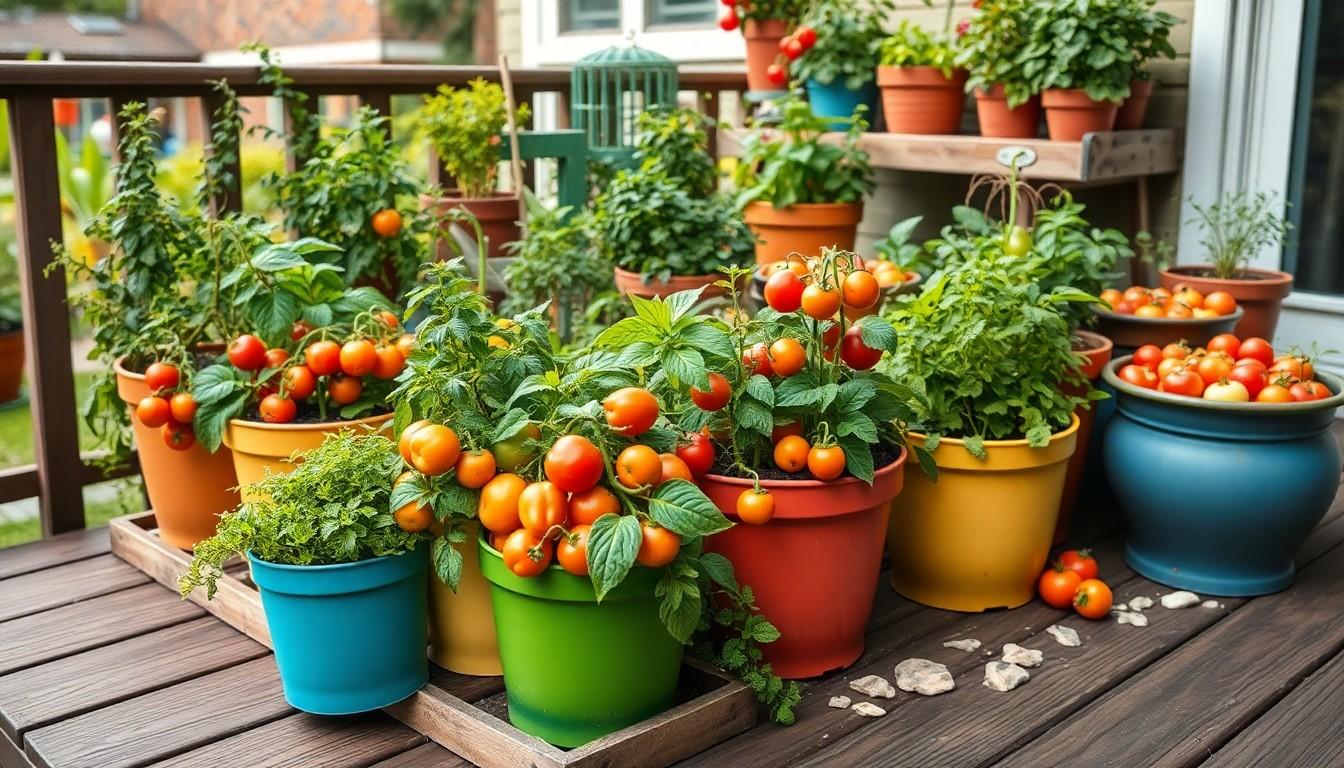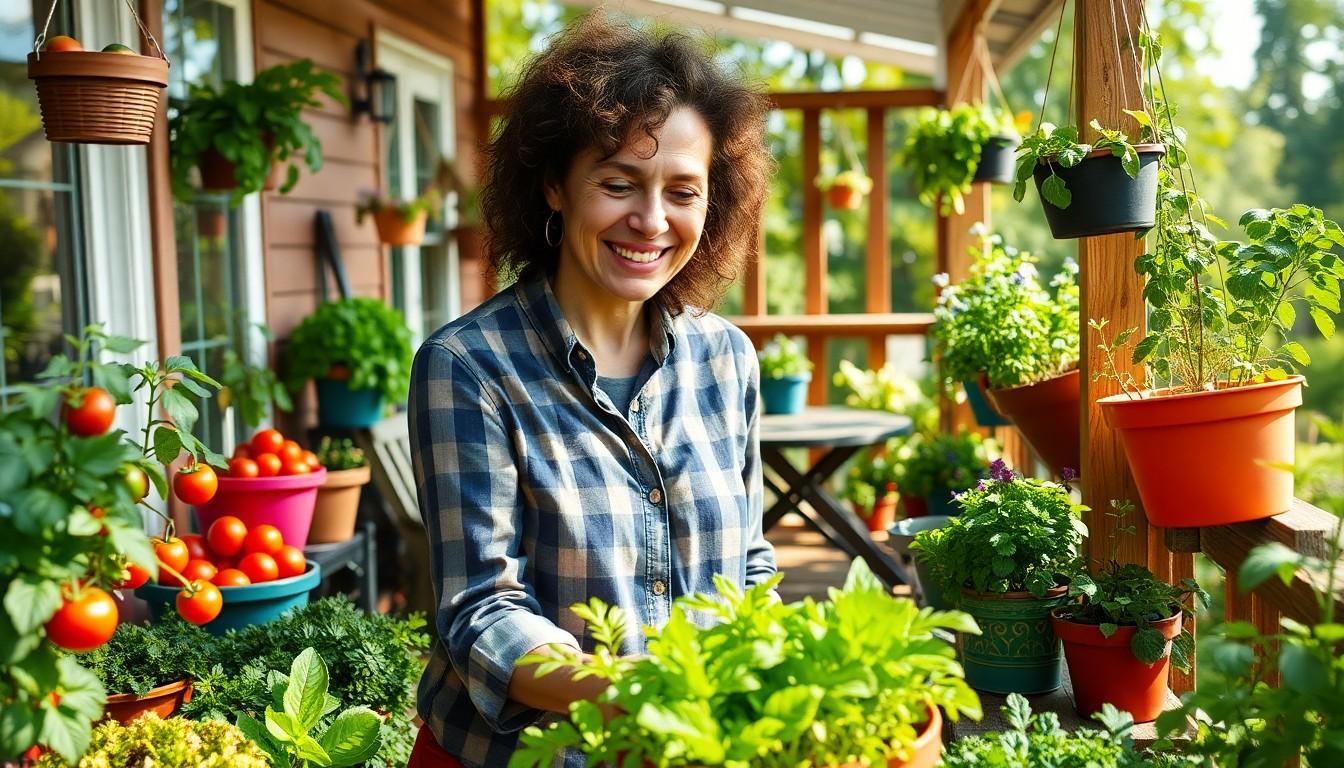Imagine stepping onto your deck and plucking fresh tomatoes or crisp lettuce without ever setting foot in a muddy garden. With a little creativity and some clever planning, a deck vegetable garden can turn that dream into a reality. It’s not just a way to enjoy homegrown produce; it’s also a chance to flex those gardening muscles, even if they’re just a little out of shape.
Deck Vegetable Garden Ideas
Consider using vertical gardening techniques to maximize space. Wall planters and vertical racks allow for efficient use of small deck areas. Opt for containers, such as pots and raised beds, to create organized, mobile garden plots.
Select vegetables that thrive in limited space. Tomatoes, peppers, and lettuce perform well in containers, offering abundant harvests without occupying much room. Many herbs, like basil and cilantro, also flourish in smaller spaces.
Incorporate companion planting strategies. Pairing compatible plants can enhance growth and deter pests. For instance, growing basil alongside tomatoes can boost flavor and improve yield.
Use a drip irrigation system to maintain plant hydration. This approach reduces water waste and ensures even moisture distribution, which is crucial for container gardening. Regular monitoring of moisture levels keeps plants healthy.
Implement a seasonal rotation for variety. Changing the crops each season allows for a continuous supply of fresh produce and helps avoid pest buildups. Early spring offers opportunities for lettuces and radishes, while summer transitions to tomatoes and peppers.
Prioritize accessibility in design. Ensure that all garden areas are easily reachable for maintenance and harvesting. Strategic placement of pots on shelves or tables simplifies gardening tasks.
Add decorative elements to enhance visual appeal. Use colorful containers and plant combinations to create an inviting atmosphere. Incorporating garden art or lighting will also elevate the deck’s aesthetics.
Explore community gardening resources for additional inspiration. Local gardening clubs and online forums provide valuable tips and ideas for deck vegetable gardening. Engaging with fellow gardeners can enhance knowledge and gardening experiences.
Benefits of a Deck Vegetable Garden

Deck vegetable gardens offer numerous advantages, making them a popular choice for urban gardeners. These gardens provide opportunities for growing fresh produce in limited spaces.
Space Efficiency
Maximizing space is crucial when gardening on a deck. Containers and vertical structures allow for the cultivation of various vegetables, including tomatoes, peppers, and herbs. Many gardeners utilize wall planters and hanging pots to create a lush environment without occupying valuable floor space. Raised beds also enhance productivity in confined areas. The integration of tiered planting increases yield and allows for crop rotation. Using these strategies, even small decks can support productive gardens.
Aesthetic Appeal
Visual beauty adds charm to any deck. Colorful pots and decorative elements create vibrant displays while showcasing vegetables. Utilizing a variety of container shapes and sizes introduces an artistic dimension. Plants such as flowering herbs or striking peppers enhance both garden function and aesthetic value. Consider adding pathways or decorative stones to improve overall design. Each element combines to create an inviting atmosphere for relaxation and enjoyment. A well-designed deck garden enriches outdoor spaces significantly.
Choosing the Right Containers
Selecting the right containers enhances the success of a deck vegetable garden. Various options suit different types of plants and space constraints.
Types of Containers
Pots, window boxes, and hanging baskets serve as popular choices for growing vegetables. Planters with drainage holes prevent waterlogging and support healthy roots. Raised containers provide ample space, especially for deep-rooted vegetables like carrots. Wall-mounted planters optimize vertical space, allowing for herbs and small greens. Self-watering systems maintain moisture levels, reducing the frequency of watering.
Material Considerations
Plastic containers offer lightweight options that resist fading but may retain heat. Clay and terracotta provide natural aesthetics and excellent breathability for roots. Metal containers deliver a modern look but can overheat and affect plant health. Wood planters blend well with outdoor decor but require treatment to avoid rot. Choosing materials that promote drainage and allow for airflow encourages optimal growth.
Best Vegetables for Deck Gardening
Selecting the right vegetables for a deck garden enhances productivity and visual appeal. Focus on varieties that thrive in containers and small spaces.
Fast-Growing Options
Radishes offer a quick turnaround, maturing in 20 to 30 days. Lettuce also allows for rapid growth, ready to harvest within 30 to 45 days. Spinach springs up quickly, providing fresh greens in about 30 days. Green beans thrive in vertical spaces, reaching harvest in around 50 days. These options maximize the productivity of any deck garden, encouraging frequent planting to enjoy fresh produce throughout the season.
Perennial Choices
Chives are a popular choice, returning each spring without replanting. Thyme offers year-round flavor and low maintenance. Oregano proves hardy, thriving in sunny locations and requiring minimal care. These perennial herbs add continuity to gardens, allowing gardeners to enjoy fresh flavors over several seasons. Planting perennial vegetables like asparagus provides lasting benefits, yielding crops for up to 20 years with proper care. These options enrich a deck garden, enhancing both taste and aesthetics.
Maintenance Tips for Deck Gardens
Maintaining a deck vegetable garden requires consistent care and attention. Implementing effective practices ensures healthy growth and abundant yields.
Watering Techniques
Watering frequently maintains soil moisture for vegetables. Drip irrigation systems offer efficient solutions by delivering water directly to roots. Gardeners can also use self-watering containers that provide consistent moisture levels. Observing plants for signs of wilting helps determine when to water. Rain barrels collect water, promoting sustainability while reducing dependence on municipal supplies. Additionally, watering in the early morning or late afternoon minimizes evaporation and maximizes absorption.
Pest Control Strategies
Managing pests involves a combination of natural and preventive methods. Introducing beneficial insects, such as ladybugs and lacewings, helps control harmful populations. Regularly inspecting plants allows for the early detection of infestations. Applying organic pesticides serves as an alternative to synthetic options. Planting herbs like basil and mint near vegetables can naturally deter pests. Covering plants with floating row covers shields them from pests while allowing light and moisture in.
Conclusion
Creating a deck vegetable garden opens up a world of possibilities for fresh produce right at home. With thoughtful planning and the right techniques it’s easy to transform any deck into a vibrant green space. By selecting suitable containers and utilizing vertical gardening methods gardeners can maximize their yield while enjoying the aesthetic appeal of their setup.
Prioritizing maintenance and pest control ensures a thriving garden that continues to produce throughout the seasons. Embracing this gardening approach not only enhances culinary experiences but also fosters a deeper connection to nature. Whether a seasoned gardener or a beginner the rewards of a deck vegetable garden are plentiful and fulfilling.

